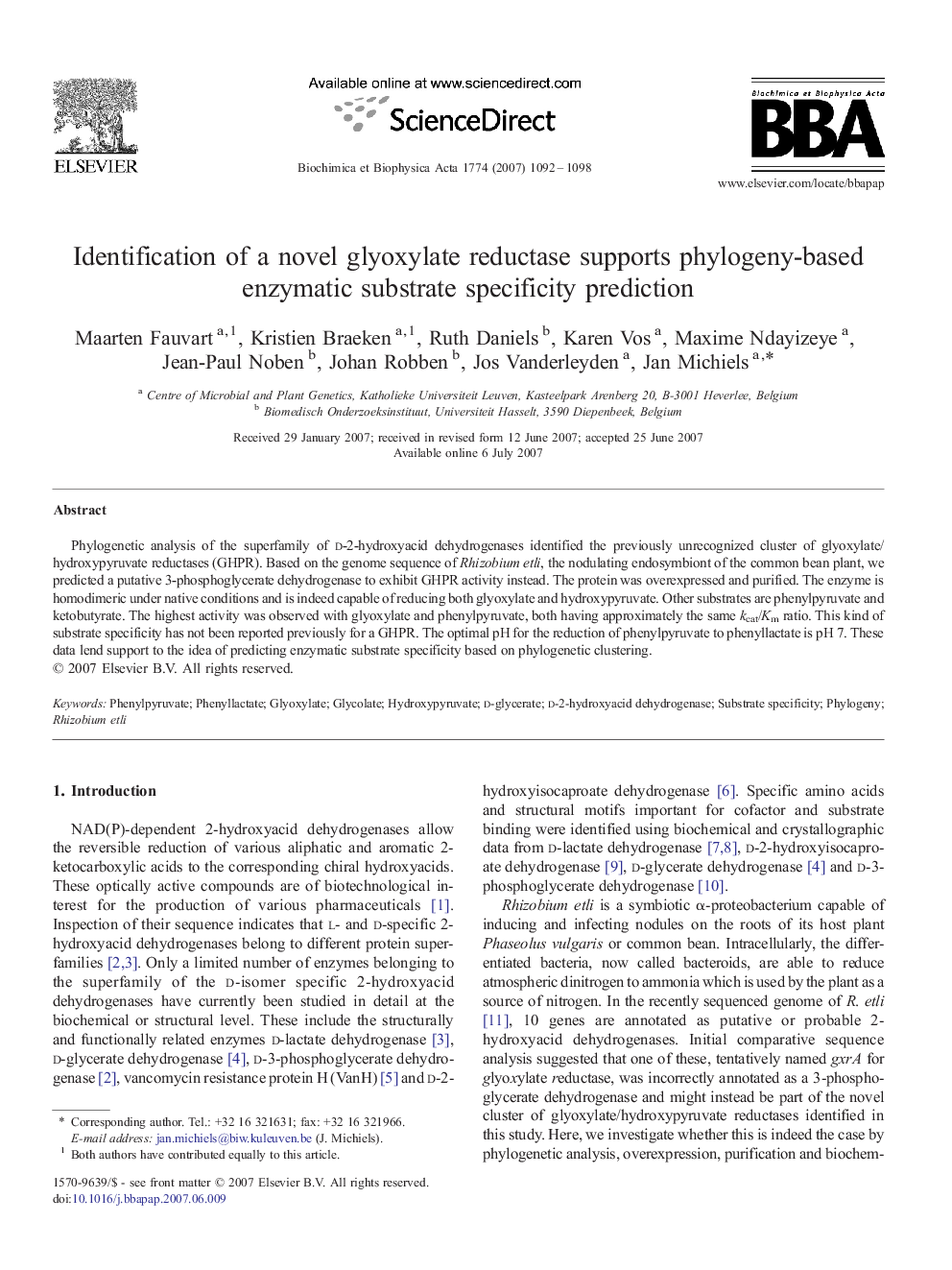| Article ID | Journal | Published Year | Pages | File Type |
|---|---|---|---|---|
| 1179135 | Biochimica et Biophysica Acta (BBA) - Proteins and Proteomics | 2007 | 7 Pages |
Phylogenetic analysis of the superfamily of D-2-hydroxyacid dehydrogenases identified the previously unrecognized cluster of glyoxylate/hydroxypyruvate reductases (GHPR). Based on the genome sequence of Rhizobium etli, the nodulating endosymbiont of the common bean plant, we predicted a putative 3-phosphoglycerate dehydrogenase to exhibit GHPR activity instead. The protein was overexpressed and purified. The enzyme is homodimeric under native conditions and is indeed capable of reducing both glyoxylate and hydroxypyruvate. Other substrates are phenylpyruvate and ketobutyrate. The highest activity was observed with glyoxylate and phenylpyruvate, both having approximately the same kcat/Km ratio. This kind of substrate specificity has not been reported previously for a GHPR. The optimal pH for the reduction of phenylpyruvate to phenyllactate is pH 7. These data lend support to the idea of predicting enzymatic substrate specificity based on phylogenetic clustering.
